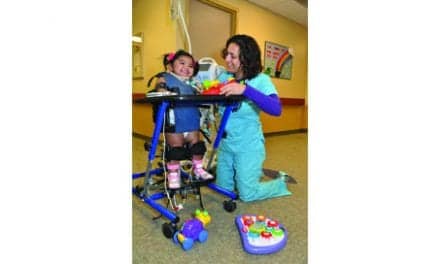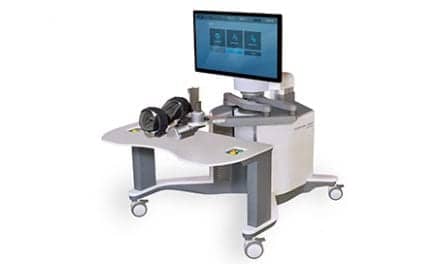
As part of his outpatient physical therapy at the University of Colorado Hospital, Trask brought in Sarah Thompson, a music therapist from Craig Hospital, Englewood, Colo, to assist with his therapy.
"A lot of times after a neurologic injury other abilities are injured but your ability to respond to music is often still there, and that’s why it is such a good tool," Thompson said.
Using an autoharp, Thompson plays a steady, predictable rhythm to enhance traditional physical therapies. She strums chords and even sings songs while Trask performs exercises. Thompson said music therapy gained popularity with veterans after World War II. In recent decades, advances in brain imaging have proven its positive effects. "Our brains and bodies are hard-wired for rhythm. Our muscles and joints move more efficiently when they move rhythmically," Thompson said.
Music therapy can also be hands-on for the patient. Trask drums on tambourines while shifting his weight, and also strums the autoharp with his left hand, which was partially immobilized by the stroke.
"Using an instrument gives someone a visual target, some tactile feedback, as well as auditory feedback," Thompson said. The music can also help with a patient’s mood or frustration in physical therapy.
"The emotional side of music is processed in areas of the brain that deal with reward, that deal with creating that sense of wellbeing in people," Thompson said.
Trask believes he wouldn’t be as far along in his recovery without the music therapy. "It’s let me know what I’m able to do, gives me the confidence to let me know that ‘Yes, I can do this,’" Trask said.
[Source: ABC 7 News]




